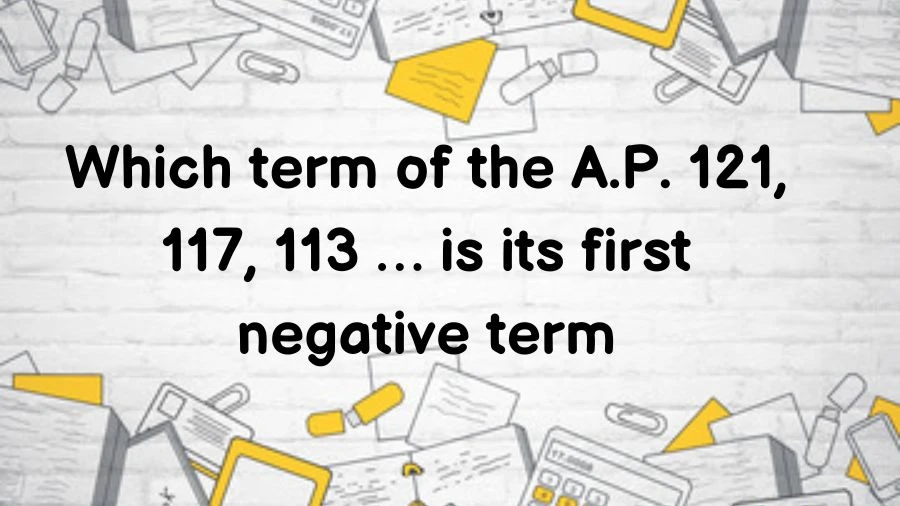If you happen to be viewing the article Which term of the A.P. 121, 117, 113 … is its first negative term?? on the website Math Hello Kitty, there are a couple of convenient ways for you to navigate through the content. You have the option to simply scroll down and leisurely read each section at your own pace. Alternatively, if you’re in a rush or looking for specific information, you can swiftly click on the table of contents provided. This will instantly direct you to the exact section that contains the information you need most urgently.
Find out when the numbers in the sequence 121, 117, 113 first start going down. We’ll guide you step by step to understand how the pattern changes.
Which term of the A.P. 121, 117, 113 … is its first negative term?
The 32nd term is teh first negative term in the sequence A.P. 121, 117, 113..
Here’s how:
The given sequence is an arithmetic progression with first term 121 and common difference -4. We want to find the term where the sequence first becomes negative.
Let the nth term be negative. Then, the nth term is given by:
a_n = a + (n – 1)d = 121 + (n – 1)(-4) < 0
Solving for n, we get:
n – 1 > 121 / 4 n > 31.25
Since n must be a positive integer, the smallest possible value of n is 32. Therefore, the 32nd term is the first negative term in the sequence.
What is Arithmetic Progression?
An arithmetic progression (AP) is a sequence of numbers where the difference between every two consecutive terms is the same. This constant difference is called the common difference. For example, the sequence 2, 5, 8, 11, 14, … is an arithmetic progression with a common difference of 3.
Here are some key properties of arithmetic progressions:
- The first term of an AP is denoted by a.
- The nth term of an AP is given by the formula: a_n = a + (n – 1)d, where d is the common difference.
- The sum of the first n terms of an AP is given by the formula: Sn = n/2 (2a + (n – 1)d).
Arithmetic progressions have many applications in mathematics, physics, and other fields. For example, they can be used to model the motion of an object under constant acceleration, or to calculate the sum of a series of numbers.
Thank you so much for taking the time to read the article titled Which term of the A.P. 121, 117, 113 … is its first negative term? written by Math Hello Kitty. Your support means a lot to us! We are glad that you found this article useful. If you have any feedback or thoughts, we would love to hear from you. Don’t forget to leave a comment and review on our website to help introduce it to others. Once again, we sincerely appreciate your support and thank you for being a valued reader!
Source: Math Hello Kitty
Categories: Math

